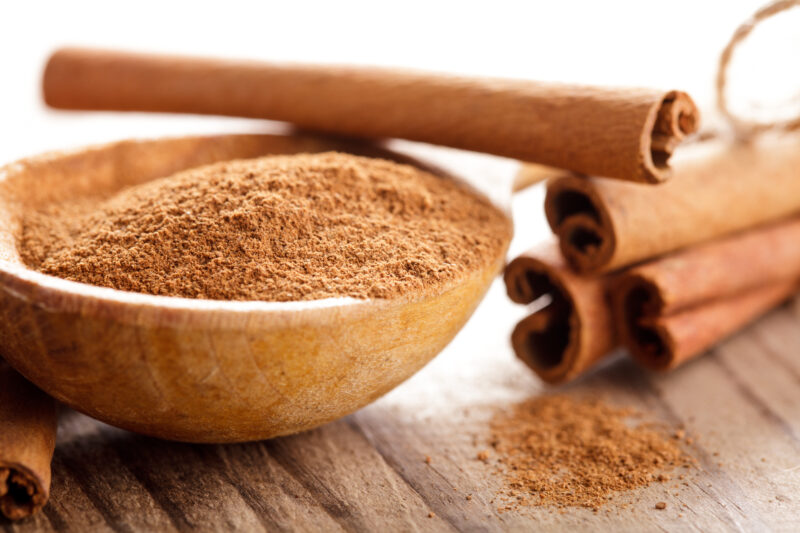Let me ask you this:
Have you ever heard of glucose disposal agents?
Chances are, you have. And, like most people, you’re probably curious. What are they? What dod they do? More importantly, can they help accelerate our gym results?
The people who promote them certainly paint an optimistic picture, but is that truly the case, or should we keep our credit cards inside our wallets for now?
Today, we’ll go over absolutely everything there is to know about glucose disposal agents, their effects, and what they are.
Let’s dive in.
What Are Glucose Disposal Agents And How Does Insulin Work?
In the simplest of terms, these are agents that supposedly improve nutrient partitioning. Their purpose is to help the body break down carbohydrates and convert them into glycogen for later use.
Supposedly, taking such supplements allows us to eat more food, stay lean, lose fat more easily, and look fuller (most likely thanks to the muscle glycogen loading). Doesn’t this sound amazing?
These supposed benefits relate to insulin – perhaps one of the most important hormones within the body. According to some sources, insulin is the primary anabolic hormone.
The role of insulin is relatively straightforward: to regulate nutrient metabolism. Its primary function is to help absorb glucose from the blood into our muscle cells, liver, and fat tissue (1). Once absorbed, glucose is converted into glycogen via glycogenesis for the liver and muscle, and into fat tissue for the liver and adipose tissue via lipogenesis.
Glucose finds its way to the liver, adipose tissue, and muscle thanks to glucose transporters (GLUTs) – these are vital proteins that allow glucose to pass the plasma membrane and get into our cells (2). For the most part, GLUTs work together with insulin. Some of them (such as GLUTS 1, 2, 3, and 5) can work independently from insulin. Meaning, insulin is not needed for them to transport glucose into different cells of the body effectively.
GLUT 4 is insulin-dependent and, according to research, is the primary transporter of glucose for skeletal muscle cells (3).
So, What’s The Relationship Between Insulin, GLUTs, And Glucose Disposal Agents?
Glucose disposal agents are said to help streamline the entire process of glucose transportation and utilization. What’s more, marketers claim that GDAs help improve nutrient partitioning by decreasing the flow of glucose to our adipose tissue in favor of our muscles.
Imagine this claim like this:
As you consume a carb-rich meal, the derived glucose is preferentially used to fuel our muscles, and much less of it gets converted to fat via lipogenesis. In essence, this would allow us to eat more food, stay leaner, feel fuller, recover better, feel more energetic, and perform better.
In some circles of the fitness world, folks claim that glucose disposal agents are particularly beneficial while bulking, as they help ‘guide’ the surplus of calories toward our muscles, resulting in smaller fat gains.
Contrary to what you may think, GDAs are not a single supplement or ingredient, but rather, many different compounds that are often paired and packaged into different products. Below, we’ll go over the most popular GDAs, the science behind them, and what that means for us.
Glucose disposal agents do work. Many of the supplements included in GDA’s are shown to increase insulin sensitivity. Improved insulin sensitivity means that our bodies cells are more readily available to accept glucose. It means that insulin can do a better job of putting carbohydrates (glucose) into cells rather than the glucose circulating in our blood stream.
A List Of The 9 Most Popular Glucose Disposal Agents
Let’s take a look at the most popular glucose disposal supplements and the science behind each of them:
-
Biotin
Biotin is a water-soluble vitamin, better known as vitamin B7. It plays a vital role in numerous processes within the body, but it’s best-known for its metabolic properties. More specifically, biotin is essential for the metabolism of carbs, fats, and protein.
Some folks also claim that biotin can help regulate blood glucose levels and tip the nutrient partitioning scale. But, is there merit to these claims? Some research seems to suggest so.
The first paper we’ll be looking at comes from the distant 1999 (4). In it, Rinsho looked at the effects of biotin on insulin release and glycolysis in the liver and pancreas. The author suggests that biotin might play an essential role in the insulin response to glucose stimulation. But, we have to keep in mind that this study was done on rats.
Another study from 2013 also looked at the effects of biotin (5). In that study, mice were fed a typical diet or one supplemented with biotin over eight weeks. The mice were tested for parameters such as glucose homeostasis and insulin secretion. It appeared that the mice that were given biotin had greater insulin secretion levels, as well as upregulated genetic factors relating to it.
Consistent with the findings, the researchers found that these mice saw improvements in glucose tolerance and serum insulin levels. There were no changes in insulin tolerance or fasting glucose levels.
A human trial found that the combination of chromium picolinate and biotin showed favorable effects on glycemic control in overweight and obese individuals with type 2 diabetes (6).
These results show some promise, but here’s the thing:
First of all, we don’t have any research on healthy and active people. How these effects might change is yet to be seen. Second, we can’t be sure that consuming more biotin than is recommended will deliver extra benefits. In other words, should we expect favorable effects of biotin supplementation if we are not deficient?
For the moment, we should approach things with a healthy dose of skepticism and move on.
Suggestion: If you want to try a glucose disposal agent, check out Carbofix. It is a multi-ingredient GDA which contains berberine, cinnamon, ALA and more. Click this link to learn more.
-
Chromium
Chromium is an essential mineral that plays an important role in our health and fat and sugar metabolism. According to research, the average human diet provides around 60 percent of our daily chromium needs (7).
The scary part is, chromium deficiency is characterized by impaired insulin functioning, decreased protein synthesis, and an increased risk of developing type 2 diabetes (8).
As a supplement, three popular forms of chromium are picolinate, chelate, and polynicotinate.
The mineral primarily works thanks to a protein called chromodulin, which plays an important role in insulin signaling. Chromium also stimulates AMPK, which seems to improve muscle cell insulin sensitivity, and glucose transportation and absorption (9).
A review paper from 2004 suggested the following (10):
1) Chromium is an important factor for enhancing insulin activity.
2) Several studies have now demonstrated that chromium supplements enhance the metabolic action of insulin and lower some of the risk factors for cardiovascular disease, particularly in overweight individuals.
3) Chromium picolinate, specifically, has been shown to reduce insulin resistance and to help reduce the risk of cardiovascular disease and type 2 diabetes.
4) Chromium picolinate is the most efficacious form of chromium supplementation.
A meta-analysis from 2014 looked at 16 studies with a total of 809 participants (440 diabetics and 369 nondiabetics) (11). Using different methods, the researcher behind the paper concluded:
The analysis indicated that there was no significant effect of chromium supplementation in diabetics or nondiabetics.
And:
Chromium supplementation appears to provide no benefits to populations where chromium deficiency is unlikely.
In other words, if you suspect that you might be deficient in chromium, getting your blood work done is a great start. And if you do happen to be deficient, then supplementation might be helpful. Other than that, the mineral doesn’t seem to deliver extra benefits.
Suggestion: Check out this related article on Pump Some Iron: “Do You Have to Eat Carbs to Gain Muscle?”
-
Gymnema (Gymnema Sylvestre)
Gymnema Sylvestre is a plant native to tropical Asia, China, Africa, Australia, and a few other parts of the world. Its leaves have been used in traditional medicine for a long time, especially for malaria and snakebites.
The more interesting bit is, Gymnema has also been used to treat and manage diabetes. According to some, the herb helps inhibit sugar absorption, which has put it under the magnifying glass of modern research.
The question is, are we onto something here?
The authors of a paper from 2017 certainly think so (12). In their words:
One such beneficial herb is Gymnema sylvestre, possessing remarkable hypoglycemic properties and forms the platform of diabetes therapeutics in the traditional system of medication.
It also appears that consuming 200 to 400 mg of gymnemic acid reduces the intestinal absorption of sugar.
In a systematic review from 2014, the authors suggest that gymnemic acid has anti-obesity and anti-diabetic properties (13). Here’s a quote:
Gymnemic acid – an active component isolated from Gymnema sylvestre – has anti-obesity and anti-diabetic properties, decreases body weight and also inhibits glucose absorption. Several components extracted from Gymnema prevent the accumulation of triglycerides in muscle and liver, and also decrease fatty acid accumulation in the circulation.
Another review also speaks positively of Gymnema, but the authors approach it speculatively, as they should (14).
We’ve seen some promising research, and Gymnema might prove to be an incredibly effective diabetes treatment. Whether these effects translate to improvements in nutrient partitioning for healthy and active people is yet to be seen. So far, we don’t have any research in that particular area, and it would be best to take the current findings with a grain of salt.
-
Bitter Melon (Momordica Charantia)
Bitter melon, also known as Momordica Charantia, is a tropical vine and is closely related to cucumber, pumpkin, and squash.
The fruit of the vine is a crucial ingredient in many Asian cuisines as it elevates the taste and brings about a ‘sharp’ element.
Aside from its culinary use, bitter melon is said to deliver several impressive health benefits. One of these supposed benefits is the reduction in blood sugar levels. The question is, does it work?
A study was done on 24 people with type 2 diabetes (15). Over three months, the subjects were given 2000 mg of M. charantia daily or a placebo. Researchers noted that bitter melon effectively lowered blood glucose levels within two hours of administration. What’s more, the subjects who were given M. charantia also saw improvements in body weight, BMI, body fat, and total insulin secretion.
A similar study on diabetes patients showed modest improvements in blood glucose levels after four weeks of supplementation (16).
According to the current consensus, bitter melon helps improve insulin secretion within the pancreas, decrease intestinal glucose uptake, and increase glucose utilization (17).
The mechanisms are promising, and the research we’ve seen on folks with diabetes also paints an optimistic picture. But, as with the previous ingredients on our list, the same problem remains:
We don’t have research on healthy and active individuals. It seems that bitter melon works for people with impaired insulin production. But would it work for healthy people and possibly improve nutrient partitioning? That remains to be studied in the future.
Suggestion: If you want to try a glucose disposal agent, check out Carbofix. It is a multi-ingredient GDA which contains berberine, cinnamon, ALA and more. Click this link to learn more.
-
Cinnamon Bark Powder
Cinnamon is said to deliver numerous health benefits, including an improved appetite and blood flow. As for glucose disposal, cinnamon bark powder is said to have insulin-like effects that lower blood sugar levels.
The proposed mechanism has to do with AMPK activation, which, in turn, should allow for glucose to enter our muscles through GLUT 4 transporters (18).
The issue is, AMPK activation impacts the mTOR pathway, which plays a huge role in muscle protein synthesis. From a mechanistic point of view, this doesn’t seem favorable.
One meta-analysis from 2012 sought to examine cinnamon’s effects on glycemic control in folks with type 2 diabetes (19). Researchers found that, across six human trials, doses of one to six grams per day seemed favorable and helped reduce fasting glucose levels compared to placebo.
The problem is, we can’t conclude from this research because:
- The subjects had type 2 diabetes;
- A 2012 paper by the Cochrane Library found a significant risk of bias for all but two trials in that area (20);
So far, given all of the information we have, the results seem inconclusive at best, and cinnamon doesn’t seem to deliver glucose disposal effects.
-
Berberine
Berberine is among the most common compounds in glucose disposal agents, and it’s a chemical extracted from plants, including European barberry, Oregon grape, and tree turmeric.
Some research suggests that berberine aids with glucose metabolism, and manufacturers have jumped the gun and have added it to their products.
More specifically, berberine was shown to improve insulin sensitivity in five weeks of administration (21). In the words of the researchers:
These results suggest that berberine enhances glucose metabolism by stimulation of glycolysis, which is related to inhibition of glucose oxidation in mitochondria. Berberine-induced AMPK activation is likely a consequence of mitochondria inhibition that increases AMP/ATP ratio.
That sounds fantastic. The only problem is, this study was carried out on diabetic rats. How these results might translate to healthy humans is an entirely different matter.
A meta-analysis from 2015 looked at 27 studies to examine the effects of berberine on folks with type 2 diabetes, hyperlipidemia (abnormally high fat concentration in the blood), or high blood pressure (22). Across the studies, subjects were given between 0.6 and 2.7 grams of berberine per day.
The meta-analysis authors found that berberine reliably decreased blood glucose, blood lipids, and blood pressure better than lifestyle interventions alone. Researchers also compared its efficacy to some pharmaceutical drugs.
We reach the issue of subjects; however – they had different health concerns. We need research on healthy individuals before concluding.
Another interesting bit about berberine’s action mechanisms is that it may reduce muscle protein synthesis (23). Given that most people take it to improve their bodybuilding efforts, I’d say this is a flawed strategy.
-
Alpha-Lipoic Acid (ALA)
Alpha-lipoic acid is an antioxidant and naturally-occurring fatty acid found in broccoli, yeast, potatoes, and organ meat, such as liver and kidney. ALA has mostly been studied for its antioxidant properties, but research is also looking at its effect on blood glucose.
For example, some previous rodent research has shown that ALA can reduce oxidative stress and improve insulin sensitivity (24, 25). Sadly, however, human research in this area is scarce.
Some research on people with diabetes shows negligible differences between individuals given ALA and a placebo.
Perhaps the biggest problem with ALA is its proposed mechanism of action: to reduce oxidative stress and inflammation. That way, it should also improve insulin sensitivity.
But, given that most active folks don’t suffer from chronic inflammation and generally consume an antioxidant-rich diet, supplementing with alpha-lipoic acid will likely be neutral. Of course, before concluding, we need research on healthy and active folks.
-
Banaba (lagerstroemia speciosa)
Banaba, commonly known as Pride of India, is a herbal extract from Lagerstroemia speciosa – a tree native to Southeastern Asia.
For a long time, banaba has been used as part of traditional medicine, and folks claim that it can help with weight loss.
These days, banaba is added to numerous supplements because it contains corosolic acid (CRA). Some researchers suggest that banaba leaf extract possesses agonistic properties to insulin. Supposedly, it can bind to insulin receptors and bring about similar effects.
One of the most famous studies used to support the idea of banaba came in 2005 (26). The study lasted for twelve weeks, and the 56 subjects received nutritional education. On top of that, they were given five weekly training sessions (three cardio, two resistance workouts), and supplements with nine total ingredients. One of the ingredients was a banaba leaf extract at a dose of 16 mg per day.
Once the trial was over, the subjects had lost 13.8 pounds. I know, I know. It sounds exciting. But ask yourself this:
How much of this result can we genuinely attribute to banaba supplementation? These subjects improved their nutrition, exercised regularly, and took eight other ingredients.
Other research on banaba (on corosolic acid, to be more precise) doesn’t seem to find beneficial effects on glucose levels (27).
As with the previous ingredients on our list, banaba leaf extract doesn’t have much research behind it, and we are yet to see it applied to healthy and active individuals.
-
Grains of paradise (aframomum melegueta)
Aframomum melegueta, also known as grains of paradise, is a species in the ginger family. Like many other herbal products, grains of paradise also boasts antioxidant properties. Some of its proposed health benefits include the treatment of GI problems, a boost in immunity, and pain relief.
But what about its effects regarding blood glucose, insulin, and nutrient absorption?
A study from 2010 was carried out on rats to evaluate the safety of grains of paradise (28). Researchers found a dose-dependent increase in liver weight when dosed with 450 and 1500 mg per kg. The rats also saw a significant drop in blood glucose levels.
Researchers concluded that grains of paradise might prove to be a useful tool for the treatment of diabetes, but that potential liver toxicity should be considered.
A more recent rodent study also shows promise in that regard (29). In it, researchers gave the rats a 10 percent fructose solution for two weeks. The rats were also given 150 or 300 mg per kilo of body weight of Ethyl acetate fraction of Aframomum melegueta for four weeks. The researchers concluded:
The results of our study suggest that AMEF treatment at 300 mg/kg bw showed potent anti-diabetic effect in a type 2 diabetes model of rats.
Other rodent research also shows some promise in that area. So far, however, we haven’t seen much human research regarding the effects of aframomum melegueta. One study shows that grains of paradise can increase energy expenditure and prevent the accumulation of visceral fat (30).
Suggestion: After this article, click this link to check out another article on Pump Some Iron: “The Carb Backloading Guide & Meal Plan”
Can Glucose Disposal Agents Help Us Lose Fat Or Gain Muscle?
These days, manufacturers make all sorts of outrageous claims for their products, but most of them fall flat. The supplement industry wants us to believe that GDAs work, but do they?
The truth is, research is far from conclusive regarding GDAs and their usefulness. Some of the ingredients have research backing them, but it’s too little to conclude from.
The ingredients show promise in some cases, but the research is done on inactive subjects (both humans and rodents) with type 2 diabetes. We can’t be sure how these ingredients might affect active and healthy individuals with above-average muscular development.
Conclusion
As a whole, most GDAs seem to be beneficial for people with type 2 diabetes, and this is still some fantastic news. Research in the upcoming years might reveal numerous agents that can help manage and treat diabetes without serious side effects.
But, the results of these studies cannot be applied to healthy people. Once you consume a meal, your pancreas will release an adequate amount of insulin, which will help the body absorb the nutrients and prevent your blood sugar levels from remaining chronically elevated.
It’s also worth pointing out that some of the ingredients have a favorable effect on blood glucose through the activation of AMPK. As we discussed above, this hinders muscle protein synthesis and isn’t exactly suitable for people who want to build muscle.
Despite the many claims, our best tactics for improving nutrient partitioning are regular physical activity, having more muscle mass on our frame, keeping body fat levels in check, and picking the right parents (i.e., having good genetics).







